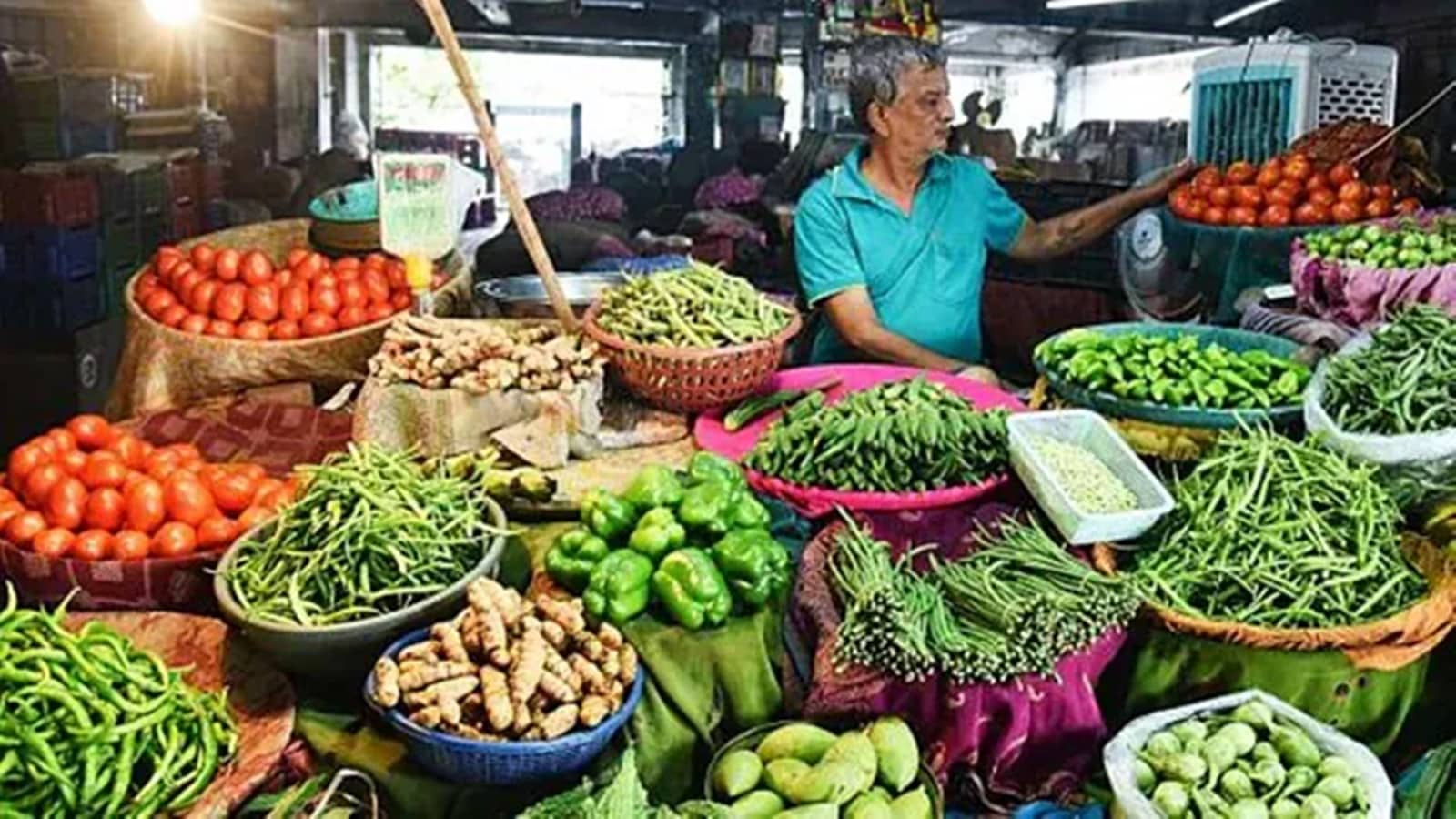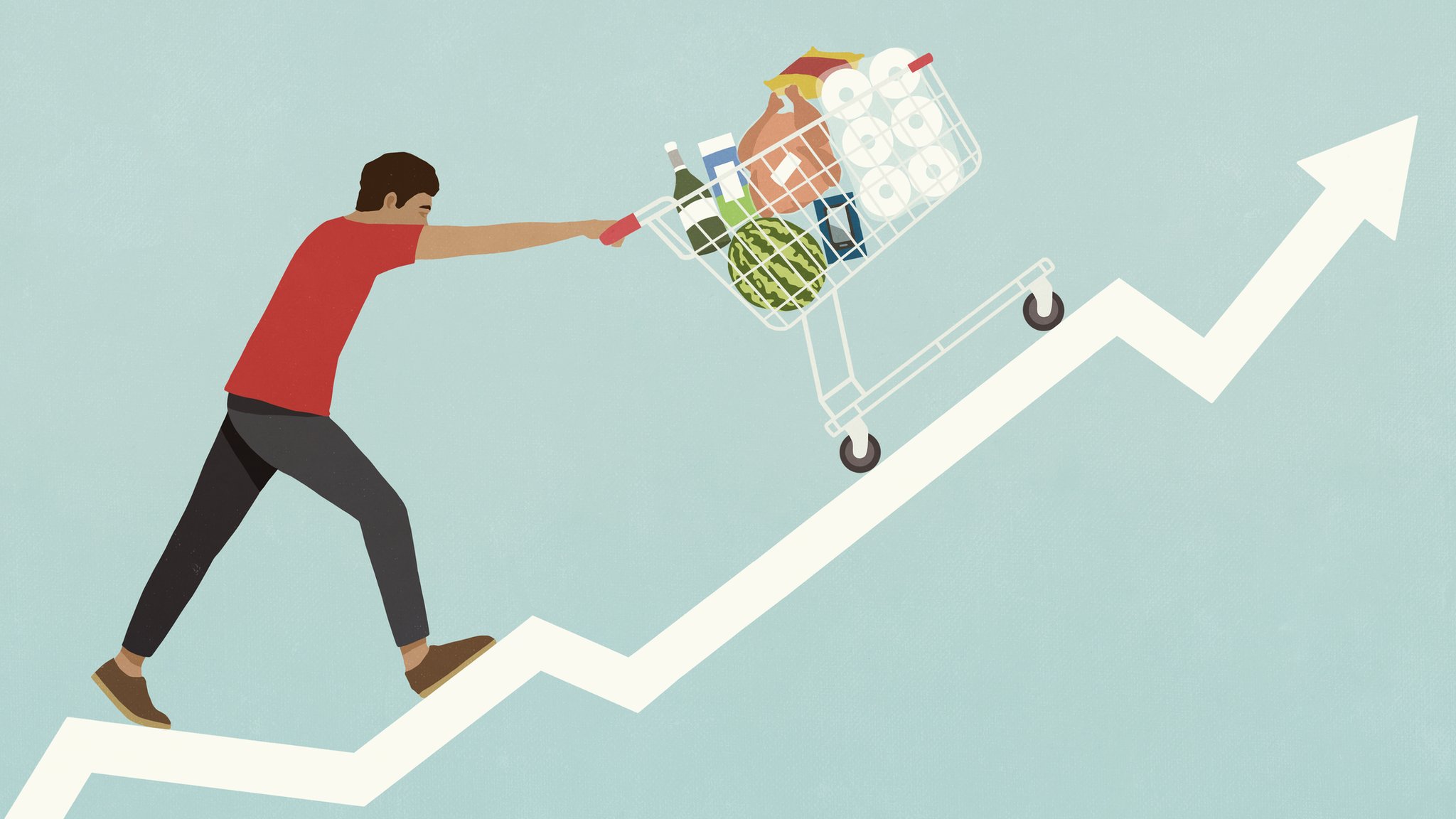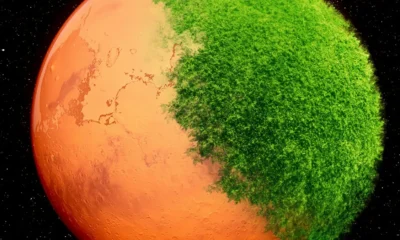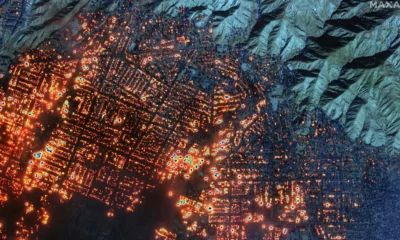Climate Journalism
Wheat Crop At Risk As February May Be Warmer In India. How Climate Change Is Resulting In ‘Persistent’ Food Inflation Crises In India?
As the world’s second-largest producer of wheat crop, India relies heavily on its domestic production to meet both local demand and export needs.
Published
9 months agoon

India is bracing for above-average temperatures this February, a worrying trend for its agricultural sector, especially wheat and rapeseed crops. Experts have warned that temperatures could soar by as much as 5°C above normal in some states, putting the crops at risk just as they enter critical growth phases. If this happens, it would be the latest in a series of challenges posed by climate change that have already sent shockwaves through India’s food security and economy.
As the world’s second-largest producer of wheat crop, India relies heavily on its domestic production to meet both local demand and export needs. But after suffering poor harvests in the last three years, the country is hoping for a bumper wheat harvest in 2025. This is crucial to avoid the need for costly wheat imports, which would only strain the economy further.
However, the situation is looking grim. Over the last few years, unseasonably high temperatures in February and March have wreaked havoc on wheat crops, shrinking yields and forcing the government to take drastic measures. In 2022, a sudden spike in temperatures caused severe crop damage, prompting India to ban wheat exports. Now, with temperatures set to rise again, a repeat of this scenario could be on the cards. If the weather conditions remain unfavorable, the country’s wheat output could be severely impacted for a fourth consecutive year, potentially forcing authorities to cut or remove the import tax to compensate for shortages.
Punjab, Haryana, Uttar Pradesh, and Madhya Pradesh – the key wheat-growing states – are expected to bear the brunt of the soaring temperatures. These regions, along with other northern, central, and eastern states, are likely to experience above-normal maximum and minimum temperatures throughout the month. This heat, especially during the crucial grain formation stage, could stunt crop growth and lead to moisture stress, significantly lowering yields.
Ashwini Bansod, vice president of commodities research at Phillip Capital India, points out that prolonged heat during the growth stages can have a detrimental effect on crop health. The worst-case scenario could be that wheat production dips even further, driving up prices. In fact, wheat prices have already hit record highs, touching ₹33,250 ($384) per metric ton earlier this month.
The risk doesn’t stop with wheat. A drop in the rapeseed crop could have broader implications for India’s vegetable oil market. India is the world’s largest importer of cooking oil, and any further reduction in domestic rapeseed production would force the country to ramp up imports, adding to the import burden. Rapeseed acreage has already shrunk compared to last year, leaving the country vulnerable to price hikes in the global market.

How Climate Change Is Resulting In ‘Persistent’ Food Inflation In India
In a report published in the Reserve Bank of India (RBI) Bulletin for August 2024, a team of researchers, including Deputy Governor Michael Debabrata Patra, Joice John, and Asish Thomas George, shed light on a troubling trend – climate change is fueling a sharp rise in food prices across India. The implications of this finding are significant and far-reaching, a shift in the factors driving inflation.
According to the study, the familiar supply-and-demand dynamics that once determined food prices have been disrupted by climate change. Extreme weather patterns and erratic climatic events have become the primary cause of supply disruptions, replacing the traditional factors of production and consumption interplay. As a result, food inflation is no longer a temporary issue—it has become “endemic,” as the study describes it. This marks a new reality for India, one that cannot be managed through the well-established mechanisms used to control price fluctuations.
This disruption has a double-edged impact. On one hand, farmers—many of whom are small and marginalized—are facing crop losses that directly reduce their income. On the other hand, skyrocketing food prices are limiting access to nutritious food for many families, ultimately affecting public health and nutrition levels. It’s a vicious cycle where the most vulnerable are hit hardest, leading to long-term economic and social consequences.
The research reveals that climate events have been the dominant factor in food price rises over the last few decades. From 2016 to 2020, food inflation averaged 2.9%. However, this figure has more than doubled in the 2020s, reaching an average of 6.3%. The study emphasizes that this sharp rise is due to a series of overlapping supply shocks caused by climate events. Changes in the distribution and spread of the monsoon, rising temperatures, and other extreme weather events are severely impacting crop growth and overall agricultural production.
The report states that while the 2020s have seen normal monsoon years, the distribution of rainfall remains “highly skewed.” This uneven monsoon distribution is one of the key contributors to the broad-based and persistent food inflation that has gripped India in recent years. The study points out that food inflation is no longer specific to certain sectors or crops; it has become a widespread issue affecting nearly every food item in the market.
In fact, over the last 48 months (from June 2020 to June 2024), 57% of the months experienced food inflation rates above 6%. The consistency of these disruptions due to climatic factors has led researchers to conclude that food inflation is no longer a temporary, localized issue—it has become a persistent, endemic problem.
This finding aligns with earlier research from the Potsdam Institute for Climate Impact Research and the European Central Bank, which warned that global warming would inevitably lead to rising inflation, particularly in developing countries like India. In fact, these researchers predict that by 2035, food inflation in India could rise by 2%, and overall inflation could increase by 1%, adding even more strain to an already burdened economy.

The Cost of Living Crisis
Since 2021, the world has been struggling with the ‘cost of living crisis.’ While there are many factors at play, one of the most pressing issues at the core of this crisis is the rise in food prices, largely driven by climate change. The severe impact of these rising costs is evident across the globe, but nowhere is this more apparent than in India, where food inflation has become a major concern, particularly for the country’s economically marginalized communities.
As food prices soar, many are finding it increasingly difficult to afford even the most basic necessities. This has led to a troubling trend—people are eating less food and sacrificing the nutrition they need for survival. The inability to afford a healthy, balanced diet is taking a toll on public health, leading to widespread concerns about nutrition security and overall well-being.
While studies on the direct correlation between food price increases and poverty are limited, some research has begun to highlight the effects. In India, climate change has played a significant role in crop failures, severely affecting the income levels of farmers. This, in turn, has created a vicious cycle—higher prices make it difficult for the economically disadvantaged to afford food, which impacts their health and nutrition. This is especially detrimental for vulnerable groups who are already struggling to make ends meet.
Senior research fellows at the International Food Policy Research Institute (IFPRI), Derek Headey and Marie Ruel, have pointed out the far-reaching effects of rising food prices on children’s health. Their studies reveal a troubling connection between food inflation and stunting in children aged 24-59 months. They explain that even short-term nutritional deficiencies during the crucial first 1,000 days of life—starting from conception to around two years old—can affect a child’s growth for years to come, with lifelong implications for their health and development.
Headey and Ruel found that a 5% increase in food prices during the prenatal period raised the risk of stunting by 1.6% and severe stunting by 2.4%. This further indicates how food price shocks are not just a financial strain but also a direct threat to the health of the youngest and most vulnerable members of society.
This scenario is particularly concerning in a country like India, where millions of people live below the poverty line. For many of the nation’s poor, the rising cost of food is more than just an inconvenience—it’s a matter of survival. With less access to affordable, nutritious food, families are forced to make tough choices, which often lead to long-term health consequences. Children, in particular, are at great risk, as even slight increases in food prices can lead to malnutrition and stunting, which have lifelong repercussions.
As climate change continues to disrupt agricultural production and push food prices higher – how can we address this crisis and protect the health and well-being of the most vulnerable populations?
The Last Bit
The key takeaway from these findings is that climate change is not just an environmental issue anymore—it’s an economic one. As extreme weather events become more frequent and intense, their impact on food production will continue to drive up prices, creating a new, enduring challenge for India’s economy. For millions of households, this means that food inflation will be a constant concern for years to come, affecting everything from daily expenses to long-term health outcomes.
In this new era of climate-driven inflation, it’s clear that urgent action is needed to mitigate the effects of climate change on food systems. Without proactive measures to address both the causes and consequences of these disruptions, India could face even higher food prices and greater food insecurity in the years ahead and the low yield of wheat crop is just the beginning of that cycle!
You may like
-


Germany’s Friedrich Merz’s Big Balancing Act—Trump, Borders & Europe’s Future. Can He Deliver?
-


World’s Largest Iceberg Threatens South Atlantic Island, As Great Barrier Reef Faces Catastrophic Coral Bleaching. Why Is Humanity Hell-Bent On Turning A Living Earth Into A Dead Mars
-


Why Donald Trump Wants Greenland—Melting Ice, Mineral Gold Rush…And Unfortunately Global Climate Disaster
-


LA Wildfires. A Deadly Mix Of Nature’s Fury And Human Shortfalls—Destruction, Tragedy, And The Lessons We Must Learn
-


The Story Of Soaring Loans…And Defaults. How Credit Has Taken Over Lives With Little Deposits. No Salary Hikes But Living Costs Remain Steady, An Overall Rough Ride?
-


Wars, Conflicts, And Climate Change. A Huge Cost To Be Paid By Humanity Ultimately As Climate Change Is Surely “Not A Priority”!

